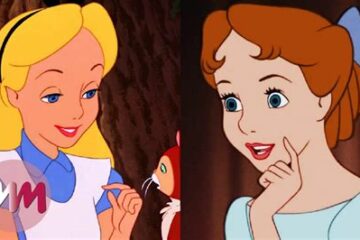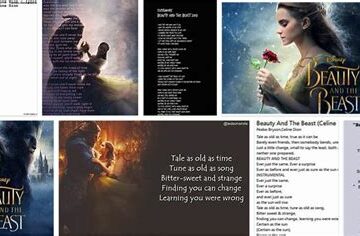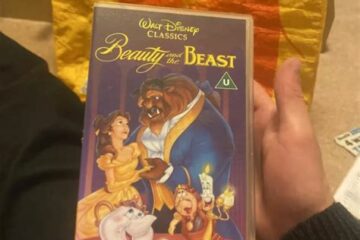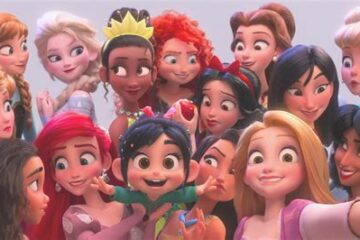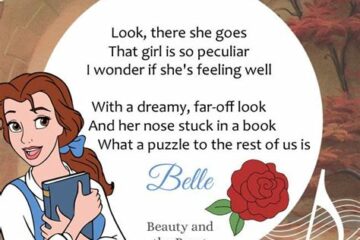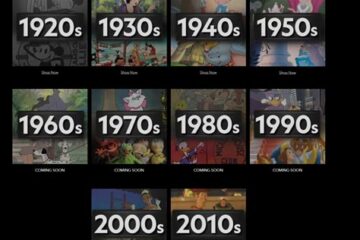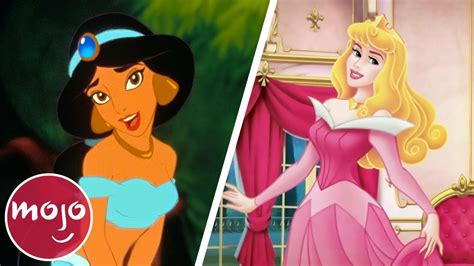
A Deep Dive Into Disney Princesses And Their Stories
### A Deep Dive Into Disney Princesses And Their Stories
Disney Princesses have captivated audiences for generations, enchanting young and old alike with their rich narratives and memorable characters. Each princess embodies a unique journey, reflecting not only personal growth but also broader cultural influences. This article invites you on a comprehensive exploration of these beloved figures, delving into the nuances of character development and the evolution of their designs. We’ll uncover the powerful themes of empowerment that resonate throughout their stories, as well as the crucial role music plays in enhancing their narratives. Join us as we unpack the magic behind the Disney Princesses, revealing the artistry and storytelling techniques that continue to inspire and resonate in contemporary culture.
A Deep Exploration Of Disney Princess Character Development
The evolution of Disney Princess character development has fascinated audiences for decades. Each princess embodies a unique journey that reflects personal growth, dreams, and triumphs over challenges. The meticulous storytelling in Disney films showcases how these characters transition from innocence to empowerment, ultimately resonating with both children and adults alike.
In the earlier films like Snow White and Cinderella, characters primarily represent traditional roles, often focusing on their beauty and the hope of finding love. These narratives, while charming, offer limited perspectives on empowerment. However, as the years progressed, Disney began to embrace a more dynamic approach to character development.
With the introduction of characters like Mulan and Tiana, audiences witnessed a shift toward narratives that emphasize independence and self-discovery. Mulan’s journey highlights bravery and self-sacrifice, challenging gender norms, while Tiana’s story emphasizes hard work and ambition in achieving her dreams. This evolution reflects broader societal changes and the increasing importance of diverse stories in media.
The characterization of modern Disney princesses also focuses on emotional resilience and individuality. Characters such as Elsa and Moana showcase profound personal journeys that highlight self-acceptance and the search for identity. Elsa’s struggle with her powers symbolizes the challenges of embracing one’s true self, while Moana embodies a strong connection to her heritage and a relentless pursuit of adventure.
This deeper exploration into the lives and experiences of Disney princesses not only entertains but also instills valuable lessons about courage, loyalty, and the significance of following one’s dreams. Each journey embodies multifaceted character arcs that not only serve to captivate audiences but also encourage them to embrace their own unique stories.
The ongoing development of Disney Princess characters illustrates a commitment to storytelling that resonates with contemporary issues and the diverse array of experiences within the audience. As Disney continues to evolve, we can anticipate even richer narratives that explore the complexities of character development, further enhancing the legacy of these beloved princesses.
The Impact Of Cultural Influence On Disney Princess Stories
The enchanting world of Disney princesses is greatly shaped by cultural influences, reflecting the diverse backgrounds and traditions of the characters’ origins. Each Disney princess story tells not only an individual tale but also embodies the values, beliefs, and customs of the cultures they represent. This blend of narrative and cultural elements serves to resonate with a wide audience, showcasing universal themes while honoring specific traditions.
Cultural backgrounds play a vital role in defining a princess’s story arc, motivations, and character traits. For instance, Moana, rooted in Polynesian culture, features rich storytelling that highlights the importance of exploration and the connection to ancestral heritage. Her journey is not just about personal discovery but also about reviving the cultural legacy of her people, illustrating how A Deep appreciation of one’s roots can inspire bravery and leadership.
Similarly, Mulan’s story blends cultural expectations of gender roles and honor in Chinese society, presenting a narrative that challenges stereotypes while promoting courage and self-sacrifice. The result is a modern reinterpretation of ancient values, underscoring how Disney characters can serve as cultural ambassadors in their own right.
By incorporating elements such as folklore, art, and traditional music, Disney enhances storytelling and amplifies the cultural significance of its princesses. The impact of these narratives shapes not only audience perceptions but also stimulates interest and dialogue about cultural heritage and its relevance in today’s society.
Disney princess stories also evolve with contemporary cultural dialogues, allowing for ongoing reinterpretation that resonates with new generations. Merging traditional aesthetics with modern sensibilities, Disney reflects and influences cultural trends, making its princesses relevant in various social contexts.
The cultural influences embedded in Disney princess narratives underscore the importance of representation and diversity, ensuring that each princess’s journey is as rich and varied as the cultures they depict. This celebration of cultural diversity not only entertains but also educates, creating a platform for understanding and empathy among audiences worldwide.
Unpacking The Themes Of Empowerment In Disney Princess Narratives
Disney Princess narratives have undergone a significant transformation over the years, particularly in how they address themes of empowerment. Each princess has a unique journey, often reflecting a gradual shift from traditional roles to more dynamic representations of female strength and independence.
One of the most notable elements of empowerment in these stories is the princess’s journey of self-discovery. Characters such as Moana and Merida demonstrate that empowerment is rooted in the ability to forge one’s own path. Through their adventures, they learn to trust their instincts, break societal expectations, and embrace their individuality. This can be seen in Moana’s determination to save her island and Merida’s quest to change her fate.
Additionally, the importance of sisterhood and friendship plays a crucial role in reinforcing themes of empowerment. In movies like Frozen, the bond between Elsa and Anna encapsulates the idea that real strength lies in support and love from those closest to us. Their relationship highlights the necessity of working together to overcome obstacles, making it evident that empowerment can manifest through collaboration as much as through individual achievements.
Moreover, modern Disney Princesses often embody leadership qualities. Characters like Tiana from The Princess and the Frog and Vanellope from Wreck-It Ralph serve as role models who pursue their goals with determination and resilience. Tiana’s entrepreneurial spirit exemplifies hard work and ambition, encouraging young audiences to chase their dreams while acknowledging the importance of perseverance.
Overall, the themes of empowerment in Disney Princess narratives reflect a deeper understanding of what it means to be a strong female character today. As these stories continue to evolve, they offer impactful messages about self-worth, friendships, and the courage to face challenges, encouraging viewers to embrace their unique identities and pursue their passions.
A Deep Look At The Evolution Of Disney Princess Designs
The evolution of Disney Princess designs reflects changes in artistic styles, societal values, and technology over the years. Each princess not only embodies a unique story but also signifies the era in which she was introduced.
Starting from the classic designs of Snow White and Cinderella in the late 1930s and 1950s, these characters often featured intricate gowns and traditional hairstyles that symbolized the beauty standards of their respective times. The designs lean heavily on fantastical elements, offering a stark contrast to the more simplified and stylized characters introduced in later decades.
As Disney adapted to new cultural and artistic trends, the designs evolved to represent a broader range of characters. For instance, the introduction of Mulan in the late 1990s showcased a more practical approach to clothing, reflecting her warrior spirit. Similarly, Tiana from The Princess and the Frog in 2009 represented not just a New Orleans backdrop, but also highlighted the importance of cultural authenticity in character design.
The 2010s saw even further diversification with characters like Moana, whose design was inspired by Polynesian culture, embodying a strong connection to her heritage. The use of vibrant colors, realistic textures, and cultural motifs became a focal point, showcasing Disney’s commitment to inclusivity and storytelling through character design.
Moreover, advancements in technology have allowed for more detailed and dynamic animation styles, enhancing how these princesses are portrayed. Today’s princesses exhibit fluid movements and expressions that bring their personalities to life, further engaging audiences.
The evolution of Disney Princess designs not only reflects changes in animation but also dialogues with cultural shifts, making each new princess not just a character, but a representation of progress and a celebration of diversity within storytelling.
The Role Of Music In Enhancing Disney Princess Storytelling
Music has always been an integral part of storytelling, but in Disney princess films, it serves a dual purpose: it enhances the emotional depth of the narrative while advancing character development. Disney orchestrates a rich tapestry of melodies and lyrics that resonate with viewers, allowing them to connect with the characters on a more profound level. Each song encapsulates the essence of the princess and reflects her journey, aspirations, and struggles.
For example, in The Little Mermaid, Ariel’s iconic song Part of Your World reveals her yearning for a life beyond the sea, setting the stage for her transformative journey. The use of music in this context allows the audience to experience her emotions intimately, making her a relatable character. Similarly, in Frozen, the anthem Let It Go is not just a powerful melody; it symbolizes Elsa’s self-acceptance and liberation. This song not only propels the plot but also fortifies Elsa’s character arc, emphasizing her growth and empowerment.
Moreover, musical scores often accompany pivotal moments, enhancing the overall atmosphere and emotional weight of scenes. For instance, the enchanting score during the beauty and tension of Belle’s first encounter with the Beast in Beauty and the Beast underscores the complexity of their relationship and adds layers to the unfolding narrative. The subtle shifts in musical tone and tempo work to guide audience reactions and heighten emotional engagement.
Through the remarkable integration of music, Disney princess films succeed in creating a lasting impact on audiences, reinforcing the idea that music is not just an accompaniment but an essential component of storytelling. It transforms the viewer’s experience, making the stories even more immersive and memorable, ultimately highlighting the powerful mantra that these songs often convey—embracing one’s identity and following one’s dreams.
Top 10 Disney Characters You Didn’t Know About
December 30, 2024The Meaning Behind Beauty And Beast Lyrics
December 29, 2024Why Beauty And The Beast Is A Timeless Disney Classic
December 29, 2024The Role Of Disney Princesses In Modern Culture
December 29, 2024Exploring The Themes In Beauty And The Beast Lyrics
December 28, 2024The Evolution Of Disney Characters Over The Decades
December 28, 2024
Leave a reply Cancel reply
Recommended
-
Evermore Lyrics Beauty And The Beast Karaoke
August 19, 2023 -
The Meaning Behind Beauty And Beast Lyrics
December 29, 2024 -
How Different Cultures Interpret Disney Characters
December 26, 2024

